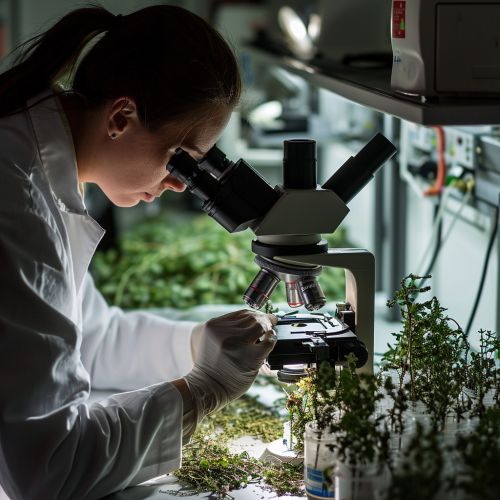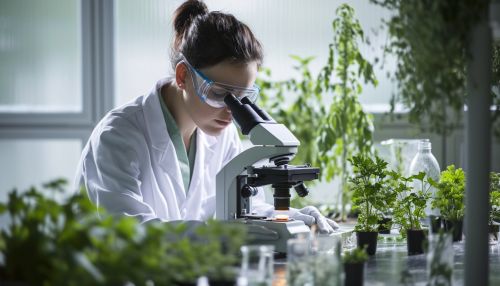Marker-assisted selection
Introduction
Marker-assisted selection (MAS) is a process used in genetics and plant breeding. It involves the use of molecular markers to select for desirable traits in organisms, most commonly plants. This method is a significant advancement over traditional breeding techniques, which rely on observable traits or phenotypes.


Molecular Markers and Their Role in MAS
Molecular markers are specific sequences of DNA that are associated with certain traits. These markers can be used to identify individuals or species, and in the case of MAS, to select for specific traits. The use of molecular markers in MAS has greatly increased the efficiency and precision of plant breeding, allowing for the development of new varieties with improved traits such as disease resistance, drought tolerance, and higher yield.
Process of Marker-Assisted Selection
The process of MAS involves several steps. First, the trait of interest is identified. This could be a trait that is already present in the species, or it could be a trait from another species that is desired in the target species. Once the trait is identified, molecular markers associated with that trait are identified. These markers are then used to screen a population of organisms, selecting those that possess the desired trait.
The selected organisms are then bred, and the offspring are again screened using the molecular markers. This process is repeated until a stable population of organisms with the desired trait is established.
Advantages of Marker-Assisted Selection
There are several advantages to using MAS over traditional breeding techniques. One of the main advantages is that it allows for the selection of traits that are difficult to observe or measure. For example, disease resistance is a trait that can be difficult to measure in a plant, but with MAS, plants with the desired level of resistance can be easily identified and selected.
Another advantage of MAS is that it can speed up the breeding process. Traditional breeding methods can take many generations to achieve the desired results, but with MAS, the desired traits can be quickly and accurately selected for, reducing the number of generations needed.
Limitations and Challenges of Marker-Assisted Selection
Despite its advantages, there are also limitations and challenges associated with MAS. One of the main limitations is the cost. The process of identifying and screening for molecular markers can be expensive, which can limit its use in some settings.
Another challenge is the complexity of traits. Many traits are controlled by multiple genes, making it difficult to identify all of the molecular markers associated with a trait. In addition, the environment can also influence the expression of traits, adding another layer of complexity to the process.
Future of Marker-Assisted Selection
The future of MAS is promising, with ongoing research and technological advancements expected to overcome some of the current limitations and challenges. For example, advances in genomics and bioinformatics are expected to make the process of identifying and screening for molecular markers more efficient and cost-effective.
In addition, the development of new molecular markers and the discovery of new associations between markers and traits are expected to expand the range of traits that can be selected for using MAS.
